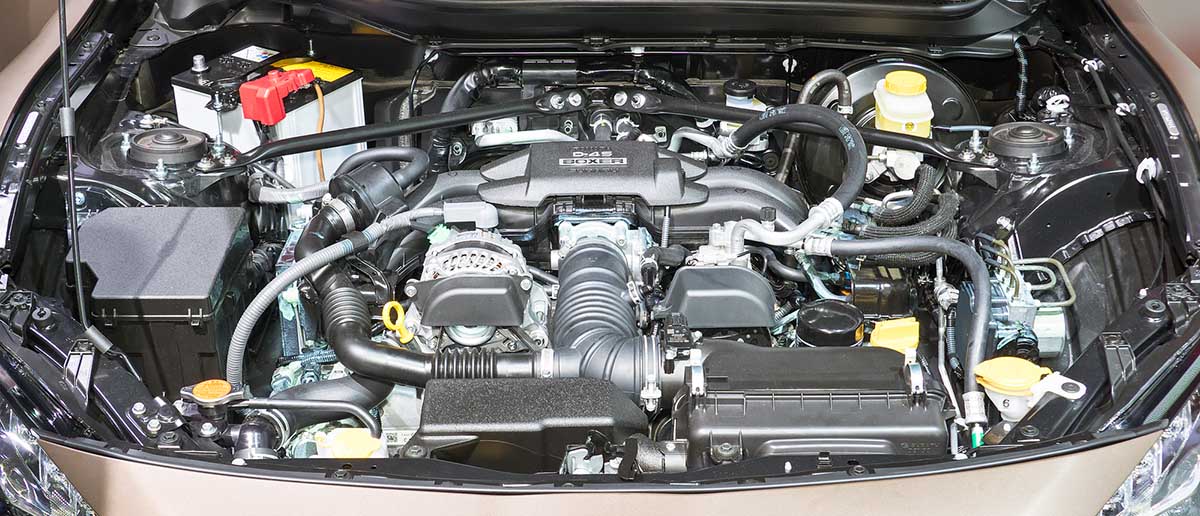
The ignition system is an essential part of the vehicle. The engine can't work properly without the ignition system. The engine may lose power. Then the car breaks down halfway. So the ignition system is very important to the engine. It is known as the engine's "heart". Now let's take a look at the composition of the ignition system and what parts need careful maintenance.
1. Components and maintenance of ignition system
2. Spark plug is a key part of engine
3. Repair ignition cables by yourself
4. Role of ignition coils and maintenance
1. Components and maintenance of ignition system
The car engine needs ignition to start. There is a complex ignition system in addition to the starter. It is mainly composed of the battery, ignition switch, ignition coil, ignition module, distributor, spark plugs, etc.
The spark plug receives enough energy of high voltage at a certain moment in accordance with the ignition order of each cylinder. Sufficient sparks are generated between two poles of the spark plug to ignite the compressed air-fuel mixture so that the engine can do work.

If you want to maintain the ignition system, you must first understand whether the performance indicators of the car ignition system are normal. Now let's talk about the maintenance. The contents to be checked are as follows.
● Replacement of spark plugs
The spark plug has a life expectancy of 10,000 to 40,000 km.
● Condition of electrode
Check the condition of the removed spark plug electrode. Cold (the heat dissipation ability is too good) electrode presents black carbon. Too hot electrode presents electrode fusion, ceramic cracking and other states.
● Electric leakage of ignition cable
Check if there is any breakage or electric leakage.
● Battery voltage
After the installation of high-powered devices, they should match the battery with a larger capacity.
2. Spark plug is a key part of engine
The engine is the "heart" of the vehicle, and the spark plug is the "heart" of the engine. The engine can't start and continue to do work without the spark plug. Careful maintenance of the spark plug helps to improve the performance of the vehicle.
The spark plug is a crucial component of the ignition system. Its structure and performance directly affect the engine performance. The engine needs the spark plug's ignition to do work.
Spark plugs are divided into three types according to the different metals used in electrodes. Ordinary nickel alloy spark plugs are divided into two types: single-stage and multi-stage. The multi-stage spark plug has an only function of the multistep ignition. We can only extend the life of spark plugs, but we can not improve the ignition strength.
It is recommended that after driving 15,000 ~ 20,000 kilometers, we replace the spark plug. For the platinum spark plug, 60,000 ~ 90,000 kilometers to replace. For the iridium spark plug, 40,000 ~ 60,000 kilometers to replace.
● Replace spark plugs with precious metal electrode material
Replace the spark plug with precious metal electrode material is to replace the ordinary spark plug with platinum or iridium spark plug.
The electrode of the ordinary spark plug is usually made of copper-nickel alloy. The electrode of the high-quality spark plugs is made of platinum or iridium. The melting point of platinum and iridium metal is relatively high. They resist high temperature and high pressure, and they are of better quality. So platinum, iridium spark plugs can send more robust and stable sparks.
As for the price, platinum and iridium metal electrode spark plugs are 2 to 3 times more expensive than ordinary nickel alloy ones. The mileage of driving is also 2 to 3 times more than ordinary spark plugs. So the cost is almost the same. We can save the time of frequent replacement of spark plugs.
In the engine's high-speed driving conditions, vehicles with the use of platinum and iridium spark plugs play stronger power performance. The advantages of the high-temperature stability can also make the engine quieter and work more smoothly.
● Replace spark plugs with multi-electrode
As for the electrode, spark plugs are divided into several types: electrodeless, single electrode, multi-electrode, etc. Most of the original spark plugs are single-pole spark plugs. Single-electrode spark plugs in the engine lead to a slow airflow rate in the cylinder.
The air between the electrodes is easier to be punctured, which produces a giant arc for the engine's low torque output. When the engine is running at high speed, the cylinder airflow rate becomes faster. The probability of generating an arc to puncture the air will be reduced. This symptom is called misfire.

The larger gap causes more misfires. It affects the engine's high-speed power output. On the contrary, a smaller electrode gap leads to a low misfire rate at high speed and low ignition energy at low speed.
The multi-electrode spark plug has more side electrodes, which increases the relative contact area between the electrodes.
In this situation, the gap between the center electrode and the measuring electrode can be decreased so that the engine ignition at low speed requires low energy. The misfire rate of the high-speed ignition is low. It guarantees a more stable ignition. This is the benefit of replacing multi-electrode spark plugs.
● Replace spark plugs with correct thermal value
There are two types of spark plugs, cold type and hot type. The insulator of the cold type spark plug is short. The advantage is that the heat transfer to the cooling system is faster, which making the ignition delayed.
This kind of spark plug is suitable for high-speed or high-performance engines.
The external insulator hot type spark plug is long. The advantage is the low price. The disadvantage is that the heat transfer to the cooling system is slower, so the heat transfer efficiency becomes poor. And the heat generated by the spark plug is more difficult to disperse.
This kind of component is suitable for low performance or low compression ratio small engines.
3. Repair ignition cables by yourself
The engine ignition system has the ignition cable to supply power to the spark plug. The ignition cable transmits the high voltage current from the ignition coil to the spark plug.
A good set of parts must have a minimum of current loss. It tries to avoid electromagnetic interference during the transmission of high-voltage electricity. So we need to maintain the ignition cable.
There are many electronic systems in the car. The electromagnetic interference generated during the transmission of high-voltage current is likely to affect the regular operation of these electronic systems.
Therefore, ordinary ignition cables are designed to have a specific resistance to avoid electromagnetic interference.
Due to the limitations of the wrapping material, the general ignition cable has a resistance of 5KΩ to prevent electromagnetic interference. And the resistance value reduces the transmission efficiency of the cable, resulting in the current loss. So the component needs to be modified.
The modification of the ignition cable is quite simple. Change the wrapping material to silicone or silicone resin. The problem of electromagnetic interference can be solved. At the same time, the resistance value can also be significantly reduced, and the transmission loss reduces.
Although the change to silicon cable can not upgrade the original ignition system, but it plays a significant role. The modification of the ignition cable can be seen as a reinforcement of the ignition system modification.
4. Role of ignition coils and maintenance
In the vehicle ignition system, the ignition coil is the conversion component that provides the ignition energy (high voltage arc or electric sparks) to ignite the air-fuel mixture in the engine cylinder. It is made based on the principle of electromagnetic induction.
For more expert tips, advice on various types of sensors, take a look at our other articles here on the Delcoribo blog.
The ignition coil can be seen as a special kind of pulse transformer that converts a low voltage of 12 V to 25,000 V or higher. The ignition coil is modified in the following ways.
● Replace with high energy ignition coils
There are two typical structures of commonly used automotive ignition coils. One is the open magnetic circuit oil-immersed ignition coil. The other is the closed magnetic circuit solid type ignition coil. The latter one is also known as the high-energy ignition coil.
The disadvantages of the open magnetic circuit oil-immersed ignition coil are: large leakage flux, low conversion efficiency, and the insulating silicone oil volatilizes and overflows.
The performance of the insulation declines, which leads to an easy puncture to the component. The large volume is also not good.
The advantages of closed magnetic circuit solid type ignition coil are: closed magnetic circuit structure, concentrated magnetic lines, high energy conversion efficiency, good voltage insulation, good heat dissipation, high product reliability, smaller size.
From the advantages and disadvantages of these two ignition coils, the reason for the replacement of the high-energy ignition coils is apparent.
● Capacitor discharge ignition (CDI)
Most of the original system is the inductive coil discharge type. The disadvantage of this system is that electromagnetic conversion requires a long time. In the high-speed engine, the system produces weak sparks due to insufficient conversion time. This leads to the loss of power.
The capacitor discharge ignition system uses each ignition interval to store ignition energy in the capacitor's electric field and release the energy at once when ignition.
Therefore, the ignition system generates more ignition energy and longer ignition duration than the conventional ignition system. The advanced structure increases the power performance.
 Lauritz Carolsfeld
Lauritz Carolsfeld  October 11, 2021
October 11, 2021


